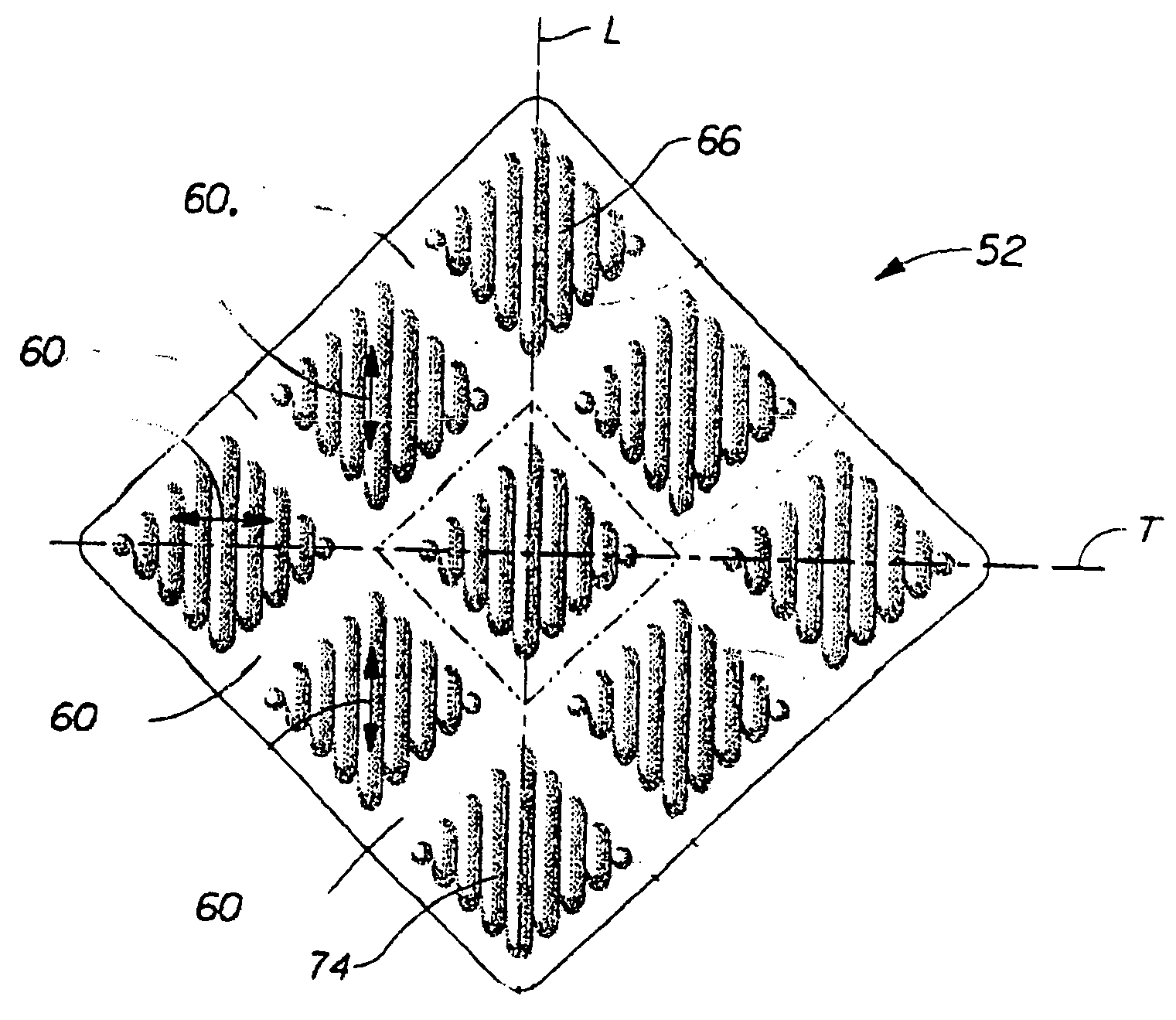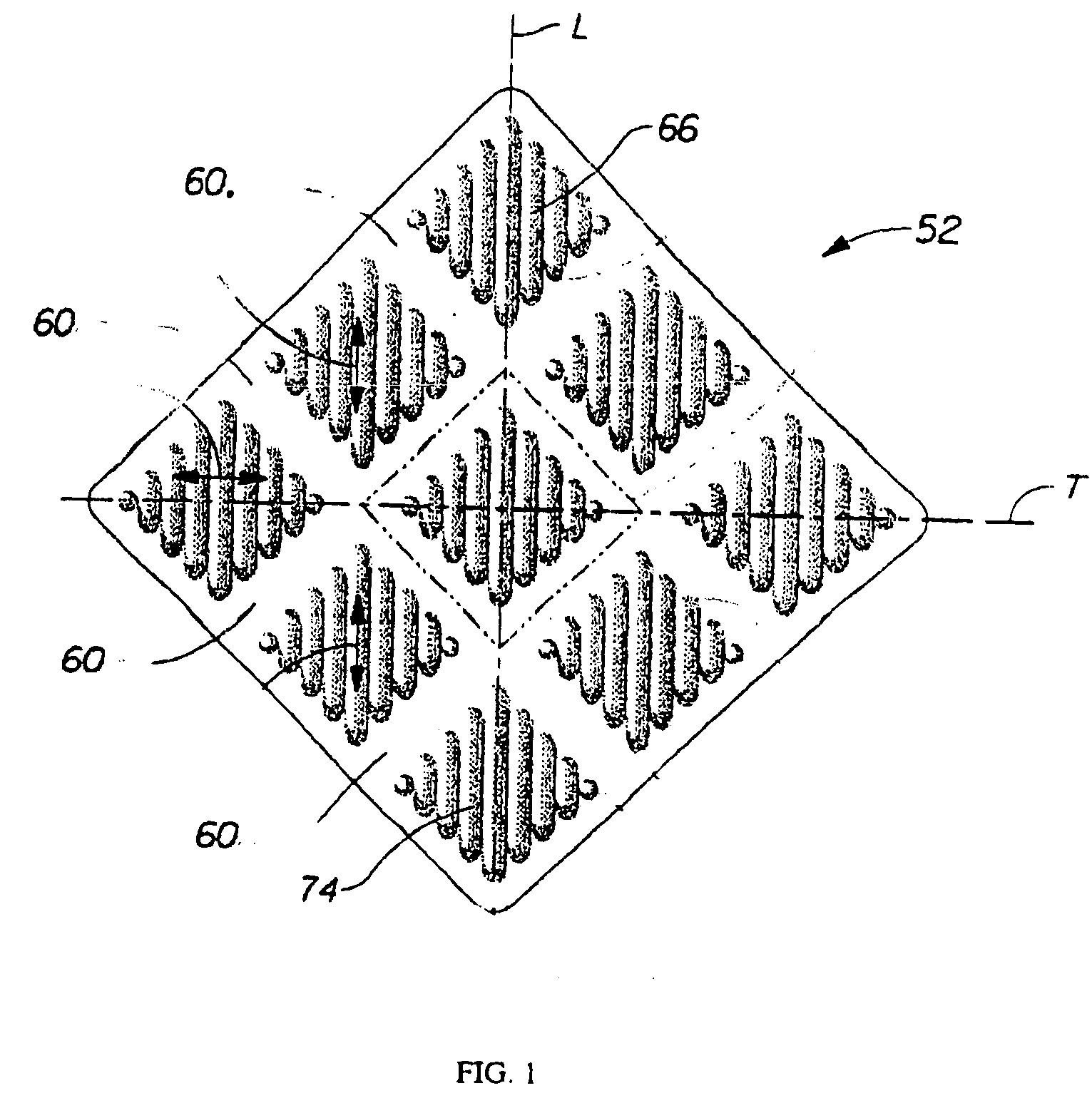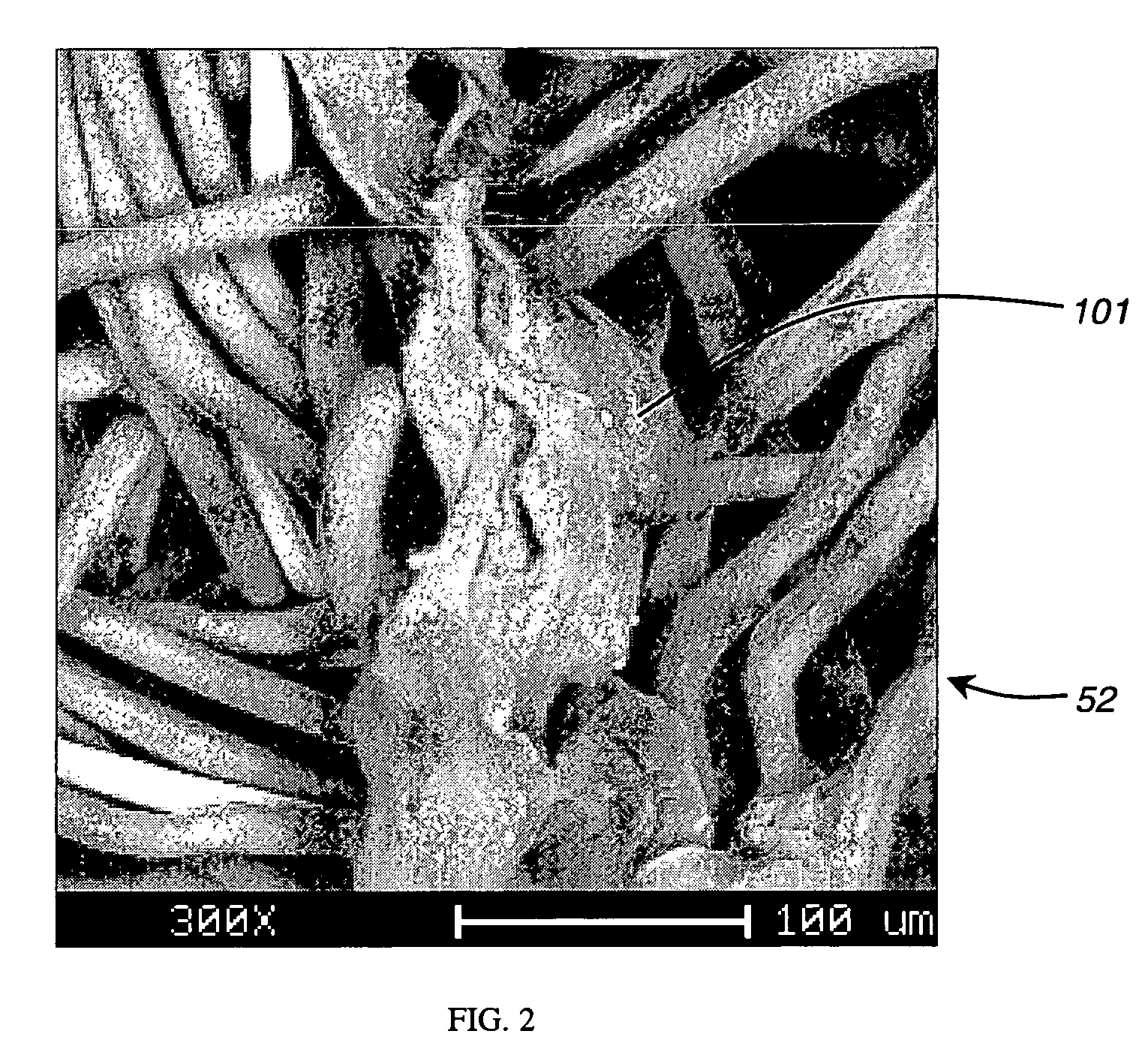Nonwoven wipe with resilient wet thickness
a wet wipe and nonwoven technology, applied in carpet cleaners, instruments, manufacturing tools, etc., can solve the problems of wet wipes, pre-moistened wet wipes, and increased basis weight incremental cost, and the thickness of nonwoven substrates typically decreases
- Summary
- Abstract
- Description
- Claims
- Application Information
AI Technical Summary
Benefits of technology
Problems solved by technology
Method used
Image
Examples
examples 1-4
[0107] The following examples are non-limiting examples of nonwoven substrates of the present invention. Each initial nonwoven substrate is subjected to the method of texturizing in the static mode, as described in the detailed description of the invention (see FIG. 5), to form the first region and the reinforced second region. An Airam Model ATP-1585 pneumatic press is used to make these examples. A wipe with dimensions of 180 mm by 200 mm is placed between plates 401 and 402 and the plates are then brought together under a pressure indicated as 80 psi on the pneumatic press. The nonwoven substrates are then made into wet wipes by uniformly applying approximately 3.15 grams of lotion per gram of dry substrate. The lotion used in these examples is a mixture of approximately 95% water with the following ingredients added: Polysorbate 20, Acrylates / Vinyl Isodecanoate Crosspolymer, Disodium EDTA, Dimethicone, Methylparaben, Propylparaben, Ethylparaben, Pehenoxyethanol, Propylene Glycol...
example 1
[0108] An initial nonwoven, Fibrella 3173 from J.W. Suominen Oy, Nakkila, Finland, is used. Fibrella 3173 is a 60 gsm carded nonwoven substrate made from a fibrous blend of approximately 73% polypropylene and approximately 27% viscose rayon. The polypropylene has a denier of 1.5 dpf and a length of 40 mm. This viscose rayon has a denier of 1.5 dpf and a length of 40 mm. During the carding process, three discrete layers of carded material are layered one on top of each another. Each of the three layers is approximately equal in basis weight. Each of the two outer layers has a blend of approximately 60% polypropylene and 40% viscose rayon. The center layer is made of 100% polypropylene. This carded material is then hydroentangled, and dried to form the initial nonwoven.
[0109] For comparison, two substrates made as described above were tested. The Control substrate was processed according to a standard texturizing method. The Reinforced substrate was processed according to the same tex...
example 2
[0112] An initial nonwoven, Softex.RTM. from BBA Nonwovens, Simpsonville, S.C., USA, is used. This grade of Softex.RTM. is a 60 gsm spunbond nonwoven. The filaments are biconstituent, with a polyethylene sheath and a polypropylene core. The weight percentage of the polyethylene sheath is approximately 50% of the entire filament. The base nonwoven is then wet. The wet thickness of this base (non-textured) nonwoven is about 0.49 mm.
[0113] The process conditions used to create a first region and a reinforced second region are:
2 Temperature [.degree. C.] 80 Dwell Time [sec] 0.4 Pattern Pitch [mm] 2.5 Depth of Engagement [mm] 1.8
[0114] The wet thickness of the reinforced textured nonwoven is about 1.36 mm, which represents about 178% increase in wet thickness compared to the base (non-textured) nonwoven.
PUM
| Property | Measurement | Unit |
|---|---|---|
| Fraction | aaaaa | aaaaa |
| Fraction | aaaaa | aaaaa |
| Fraction | aaaaa | aaaaa |
Abstract
Description
Claims
Application Information
 Login to View More
Login to View More - R&D
- Intellectual Property
- Life Sciences
- Materials
- Tech Scout
- Unparalleled Data Quality
- Higher Quality Content
- 60% Fewer Hallucinations
Browse by: Latest US Patents, China's latest patents, Technical Efficacy Thesaurus, Application Domain, Technology Topic, Popular Technical Reports.
© 2025 PatSnap. All rights reserved.Legal|Privacy policy|Modern Slavery Act Transparency Statement|Sitemap|About US| Contact US: help@patsnap.com



